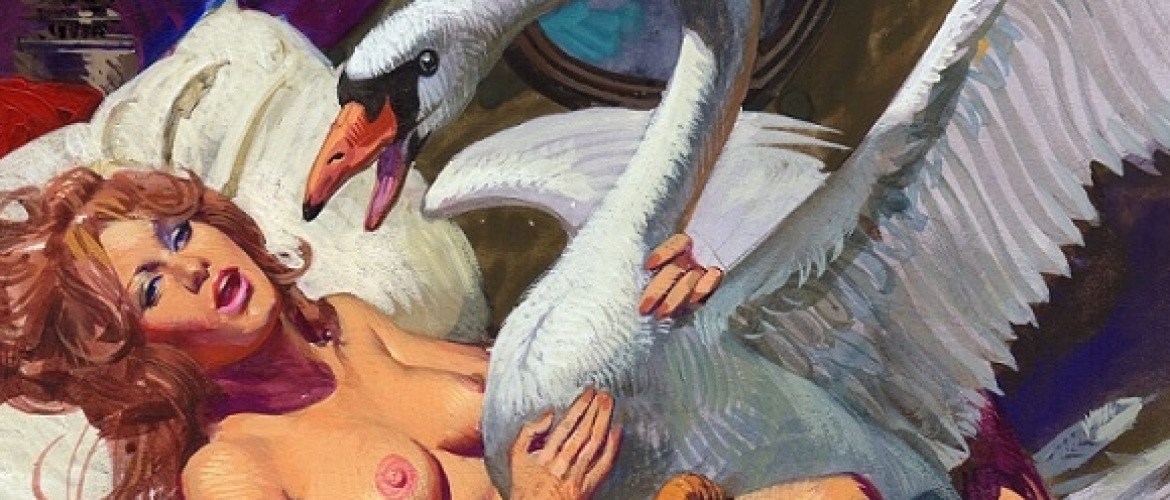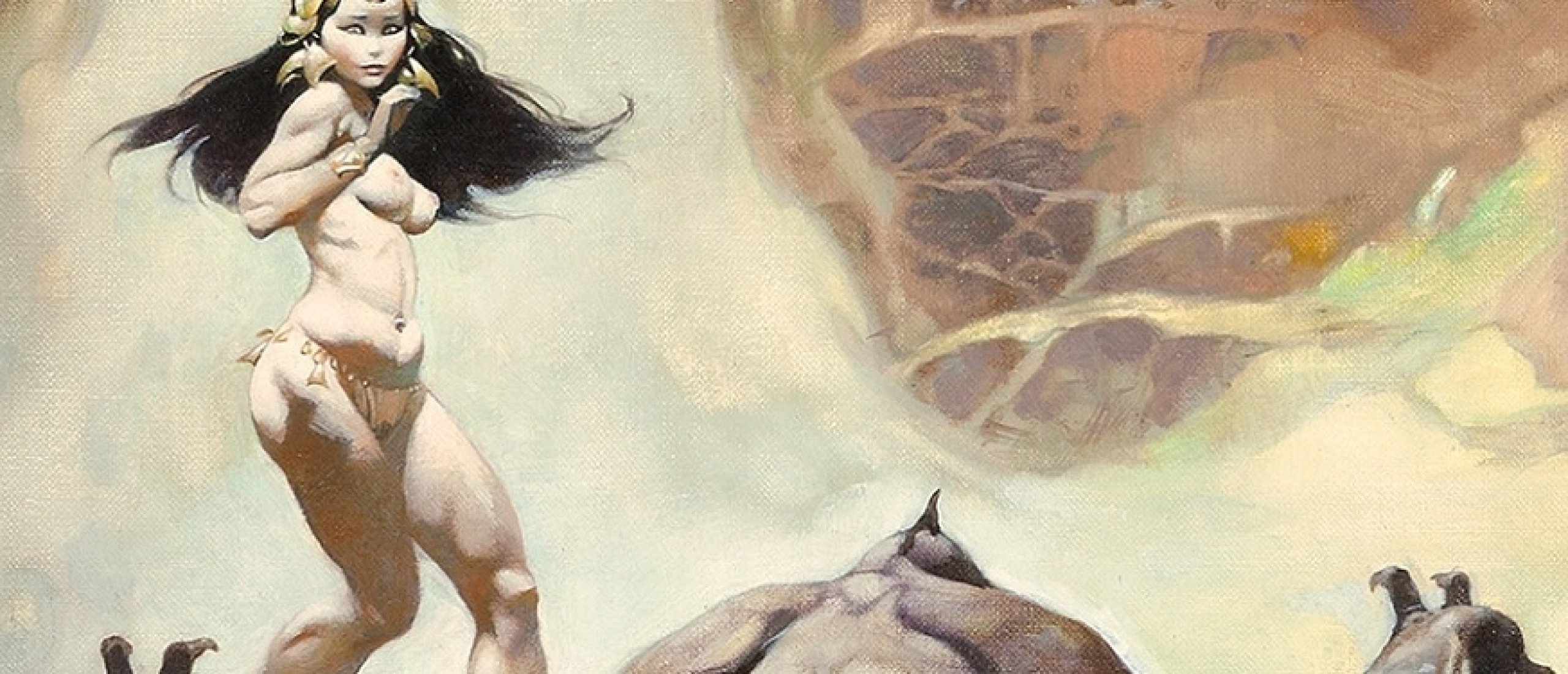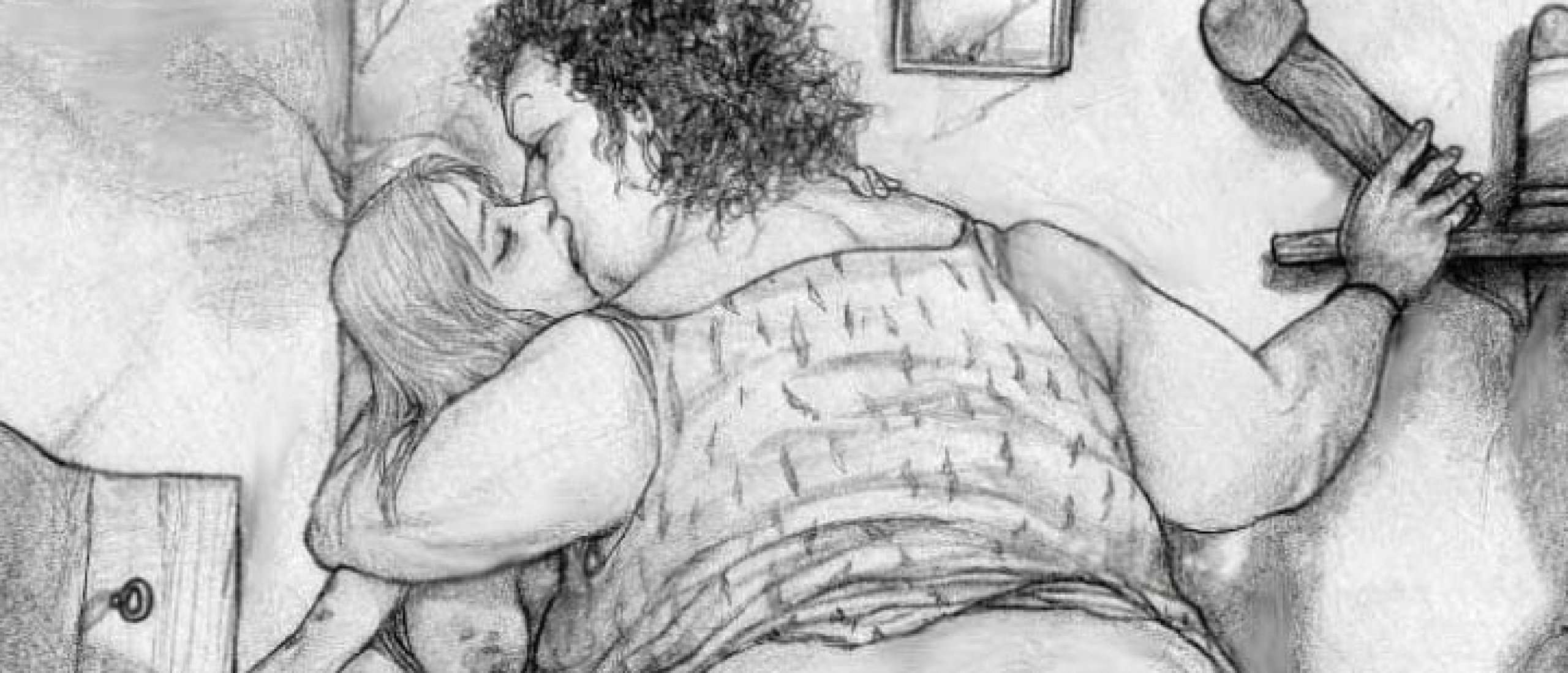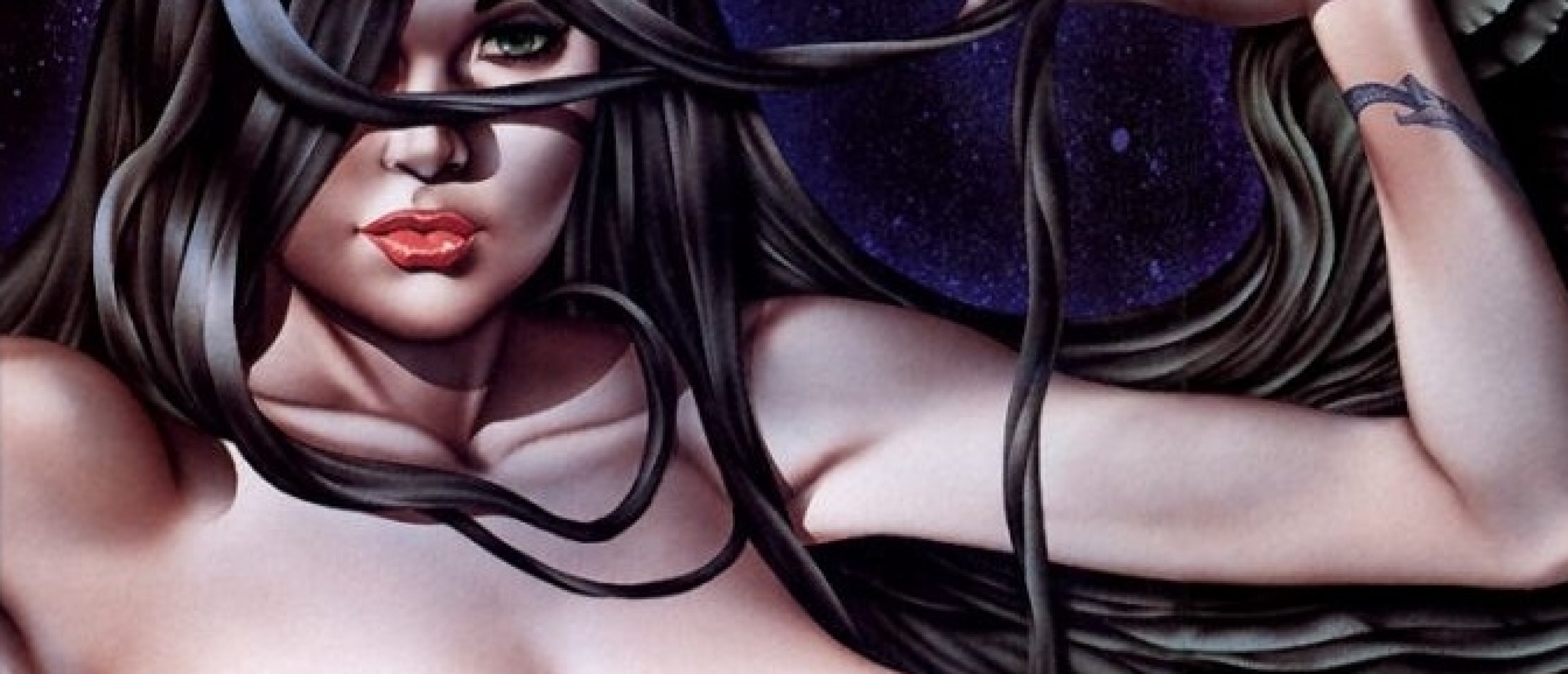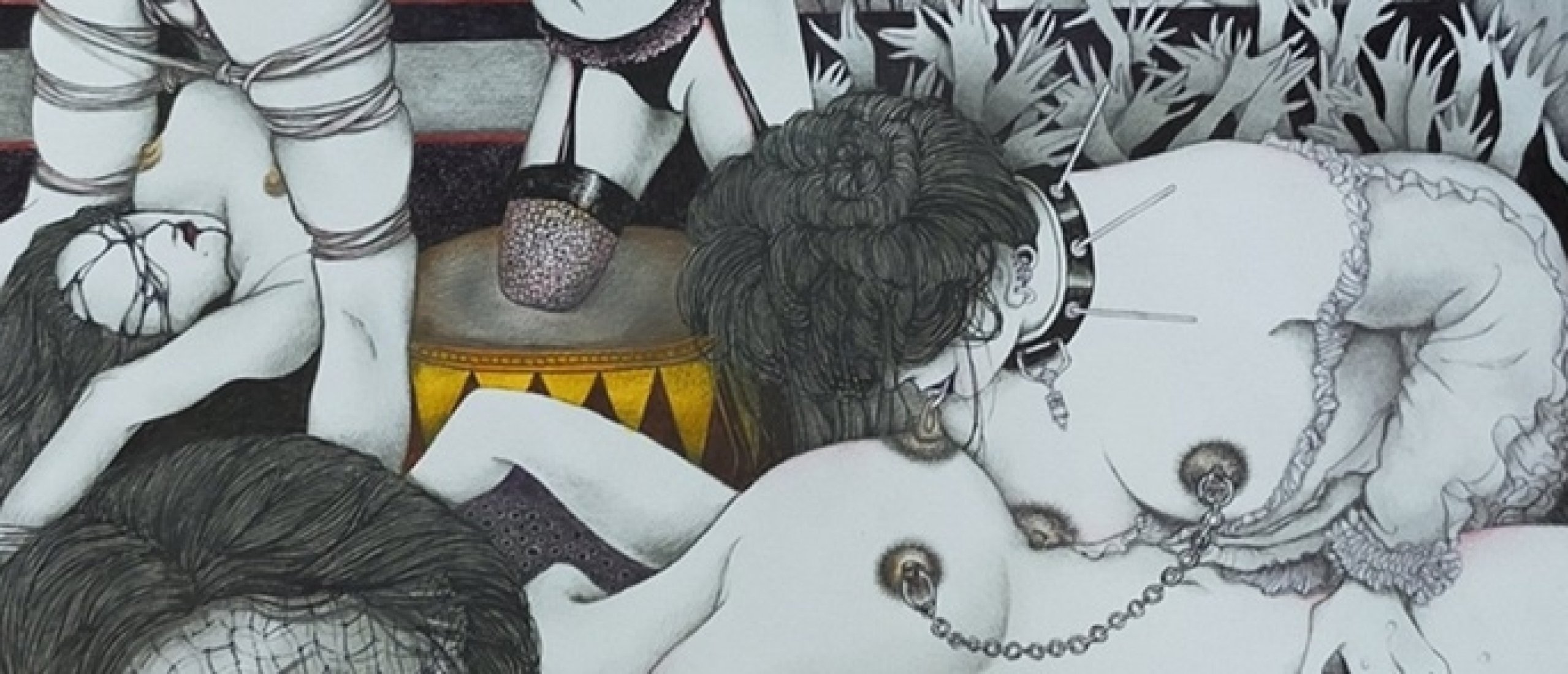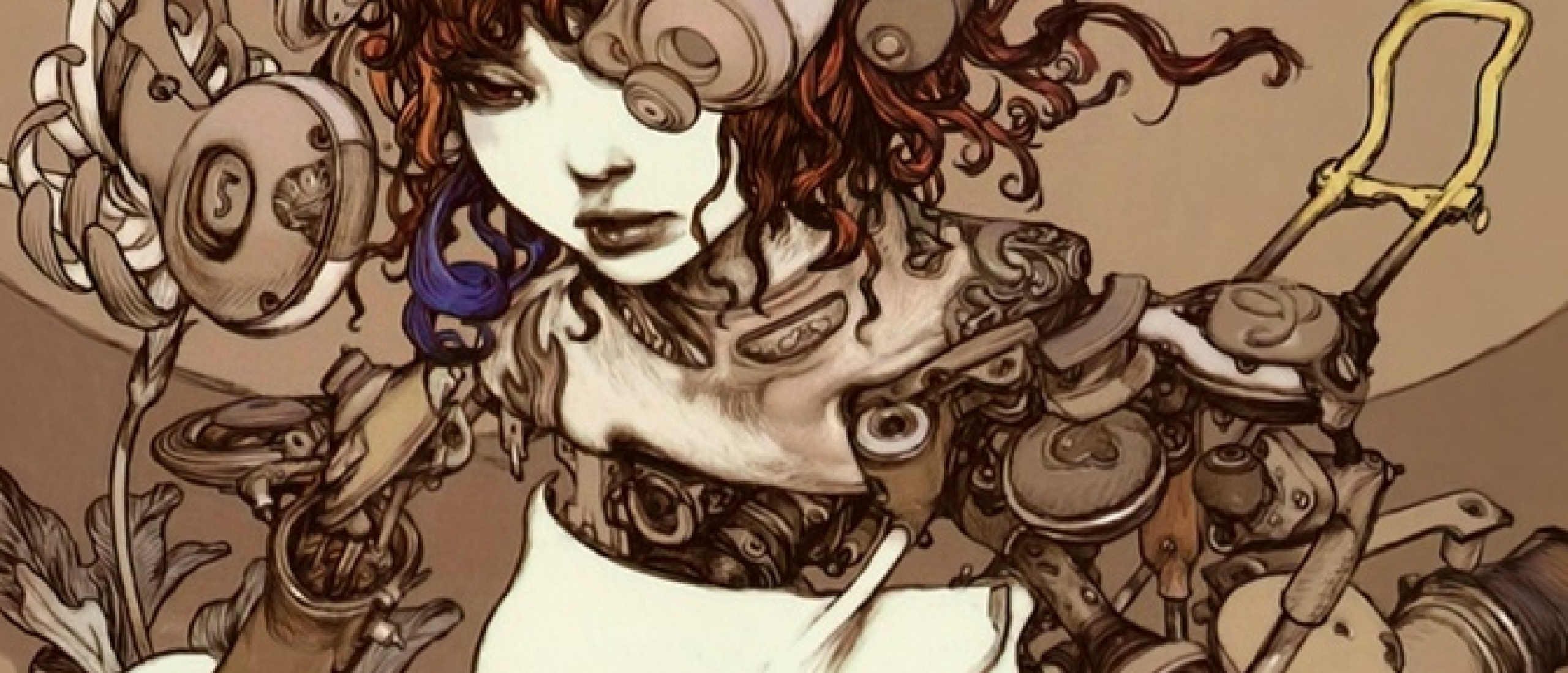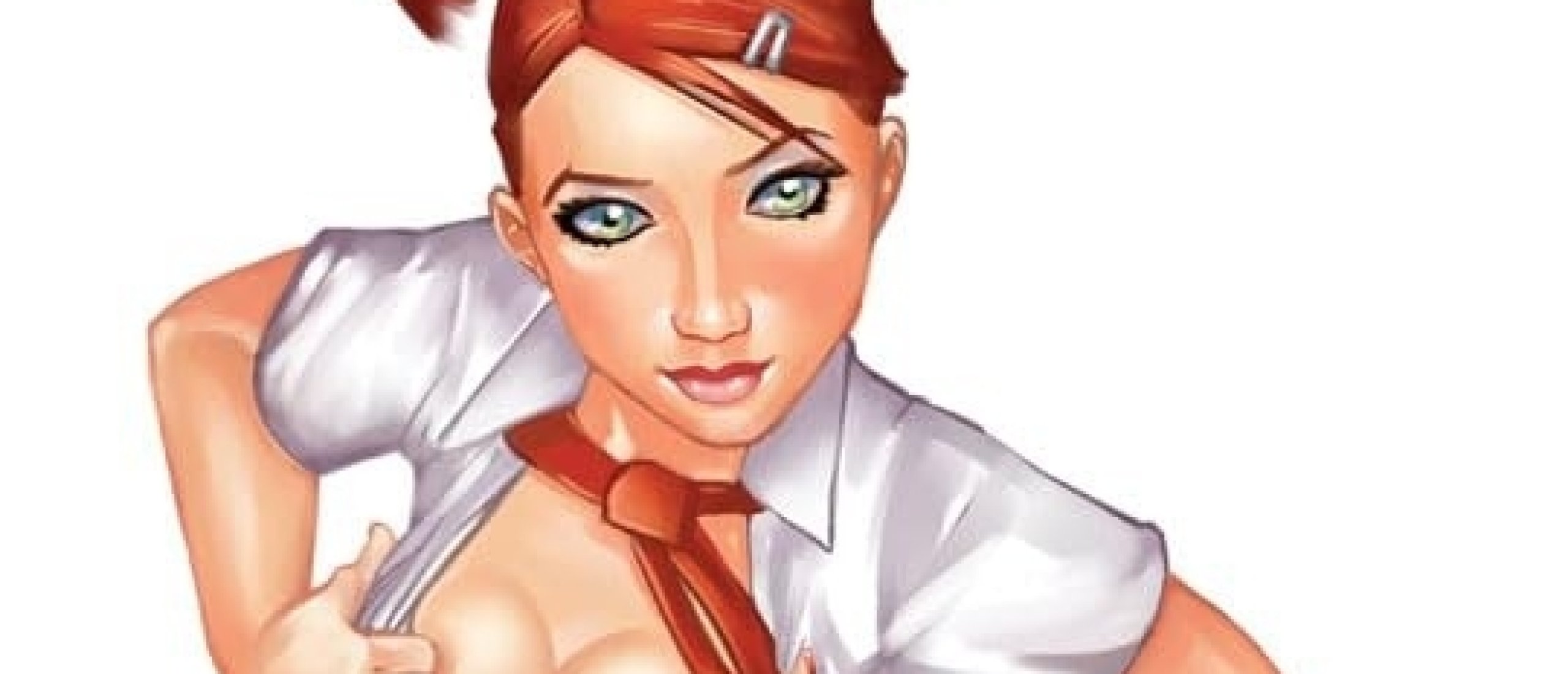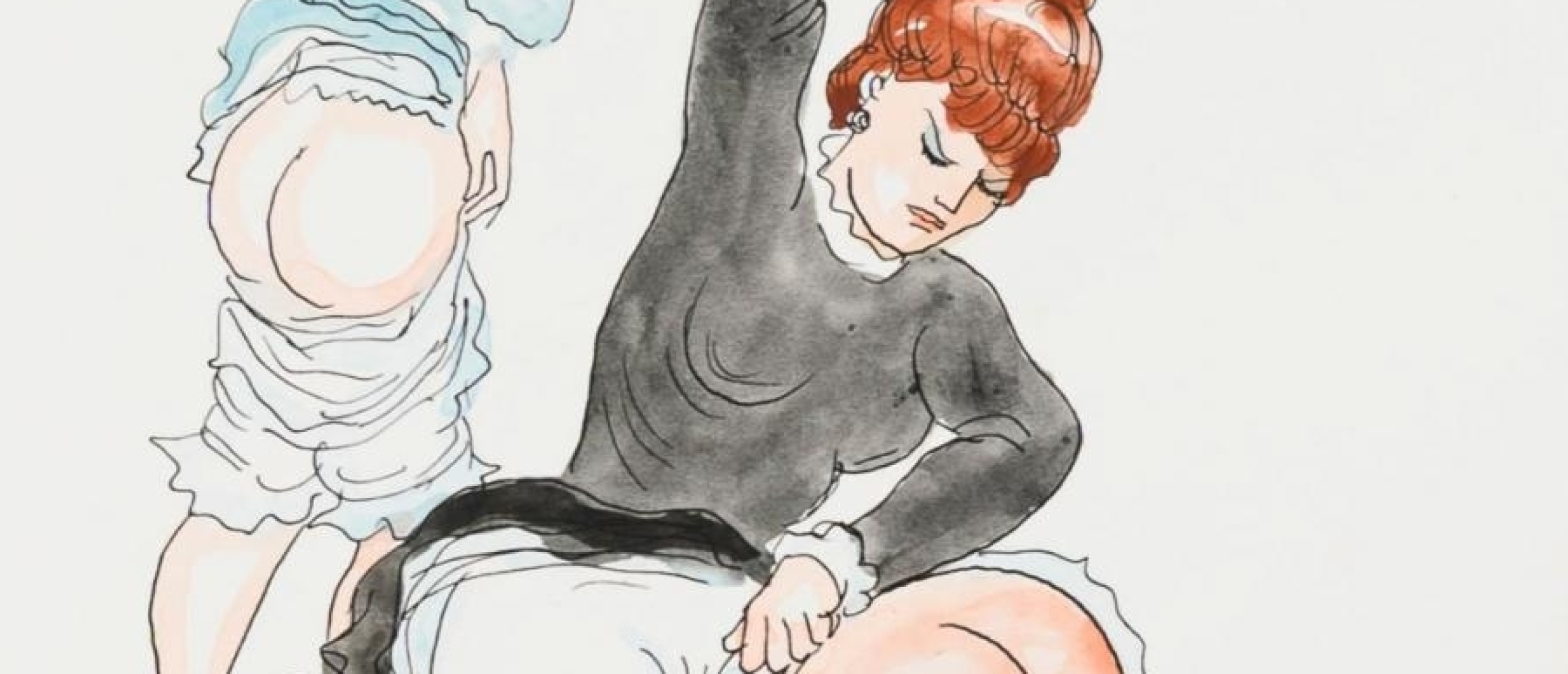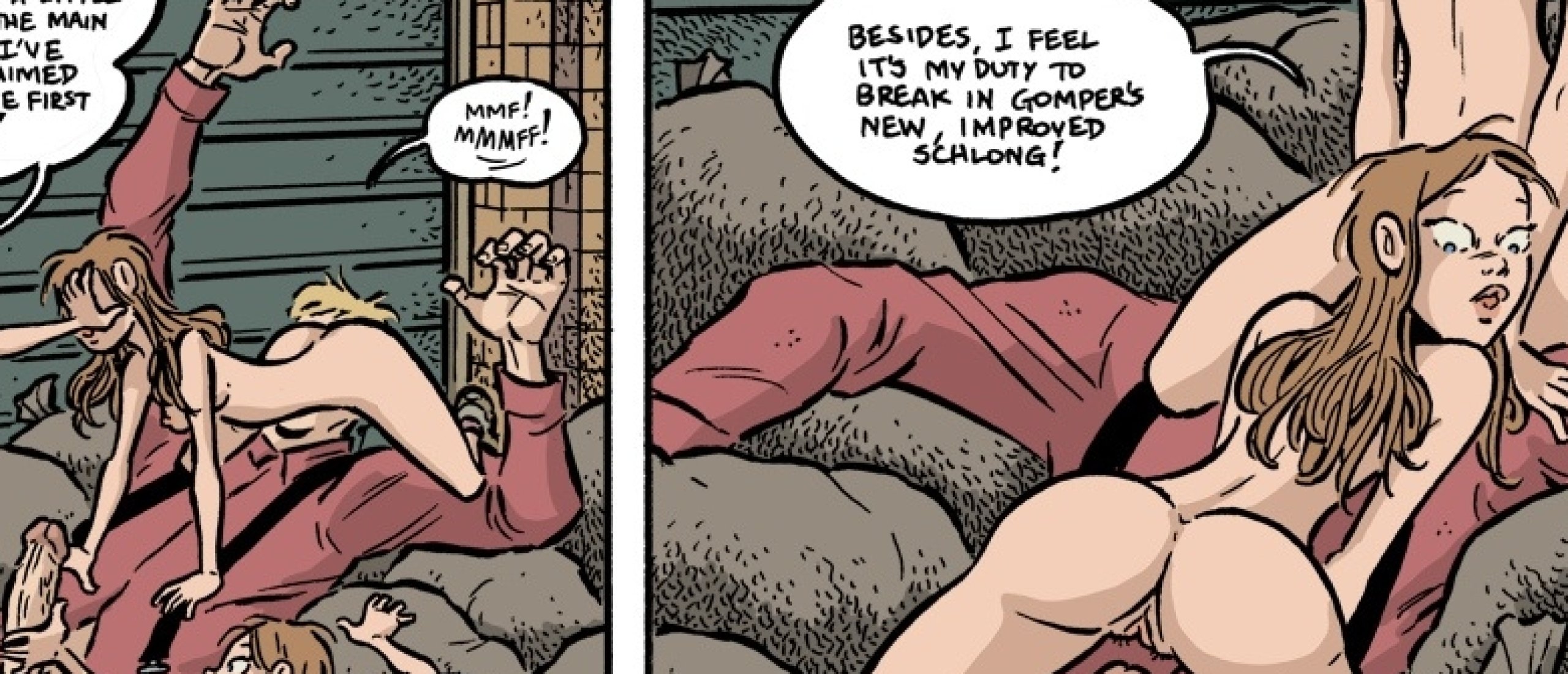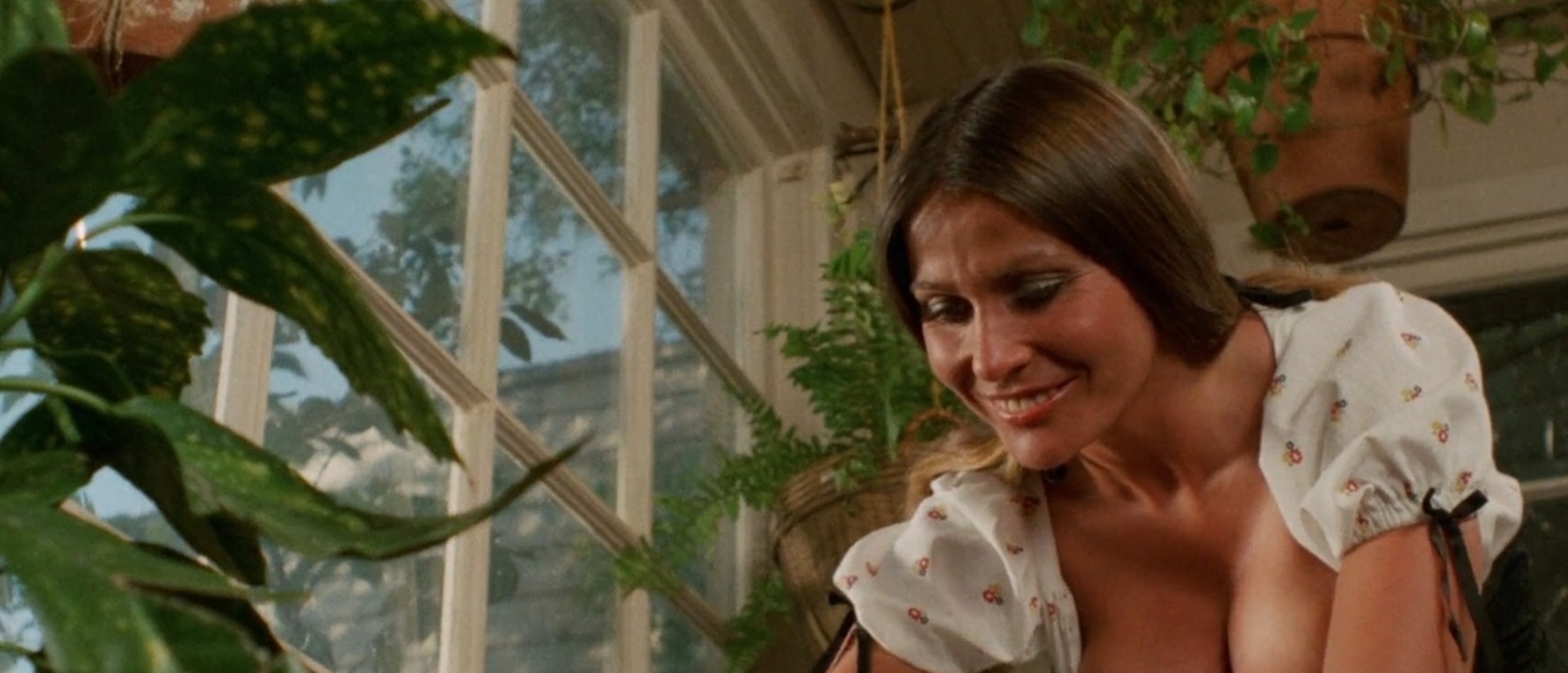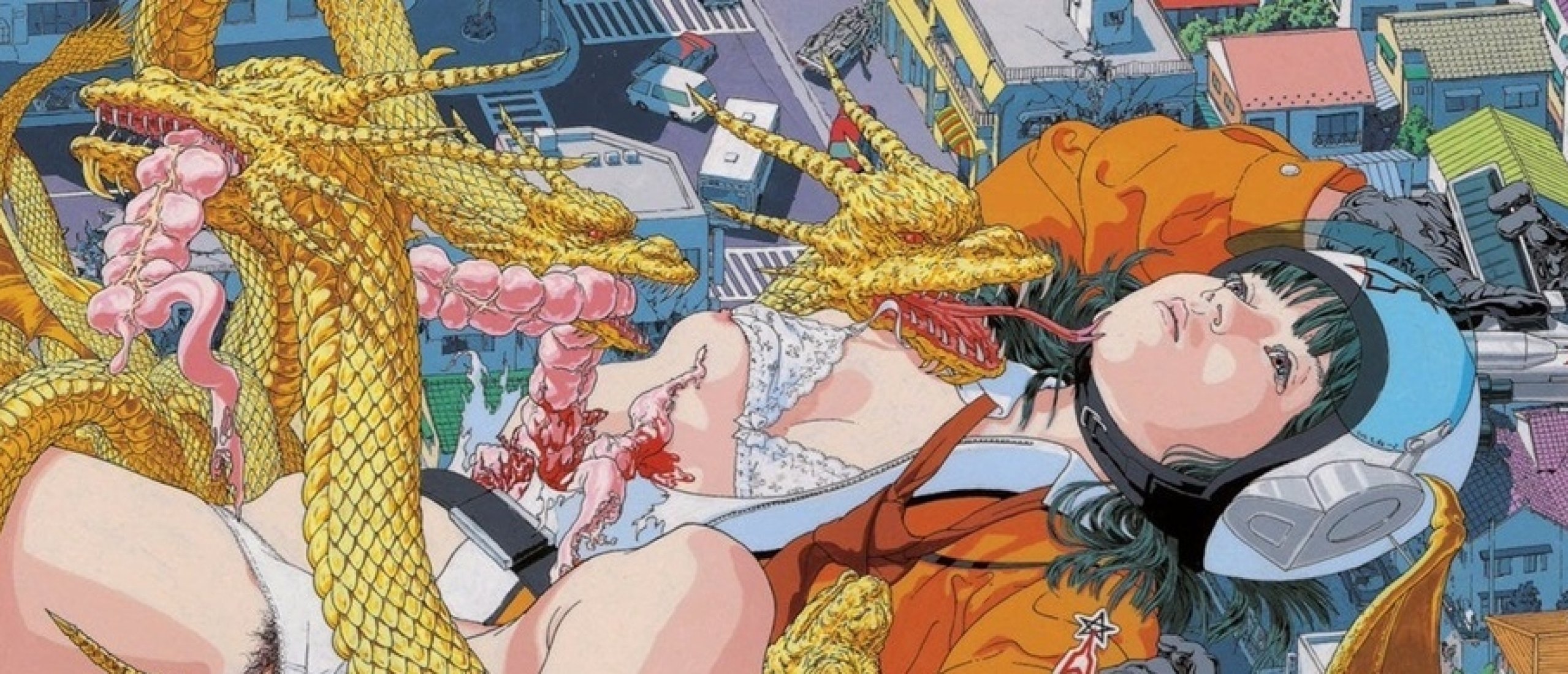
Being Hated Is One Of My Jobs
Makoto Aida, born in 1965 in Niigata Prefecture, has gained recognition both in Japan and the West for assimilating and blending manga, traditional Japanese painting, and Western art, while exploring controversial aspects of contemporary Japanese society. His work, known for its depictions of the erotic and the grotesque, often sparks debates, such as the "Harakiri Schoolgirls" series (Fig.4), where he portrays seductive schoolgirls disemboweling themselves in a clear reference to the traditional suicide ritual associated with the samurai honor code. Although criticized by feminists, Makoto Aida believes that being hated is part of his job as an artist:
“I have occasionally been criticized because of this by women curators or middle-aged collectors who describe themselves as feminists. But this has never affected me very much because they are always so dogmatic. I guess that there must be many people who hate my work, but they don’t normally come near me so I don’t meet them. I think that being hated is one of my jobs as an artist. Regardless of any sexual issues, my work is quite distinct from my private beliefs or personality. You could say that they are in an ironical relationship with each other.”
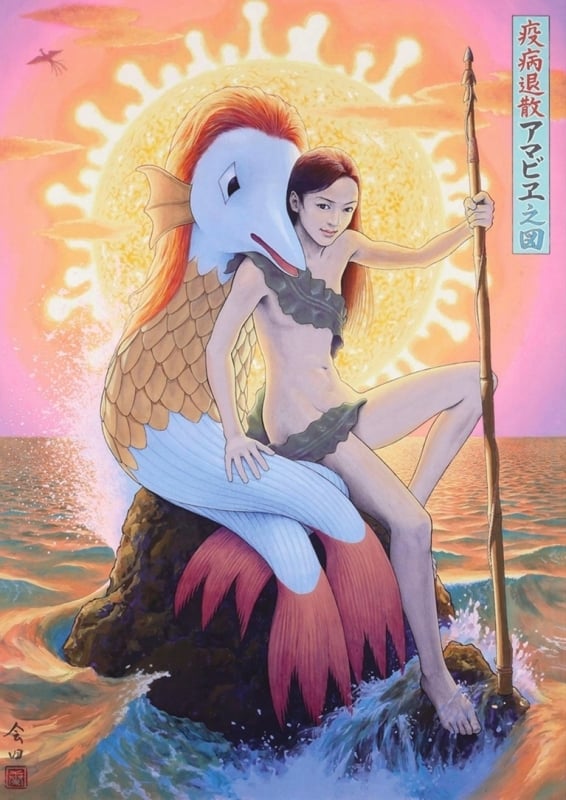
Fig.1. Amabie - Pandemic Evacuation
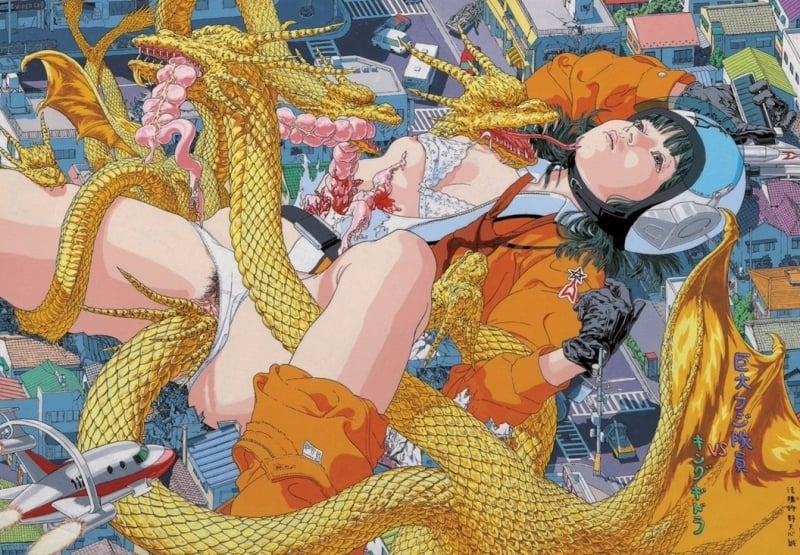
Fig.2. The Giant Member Fuji Vs King Gidora (1993)
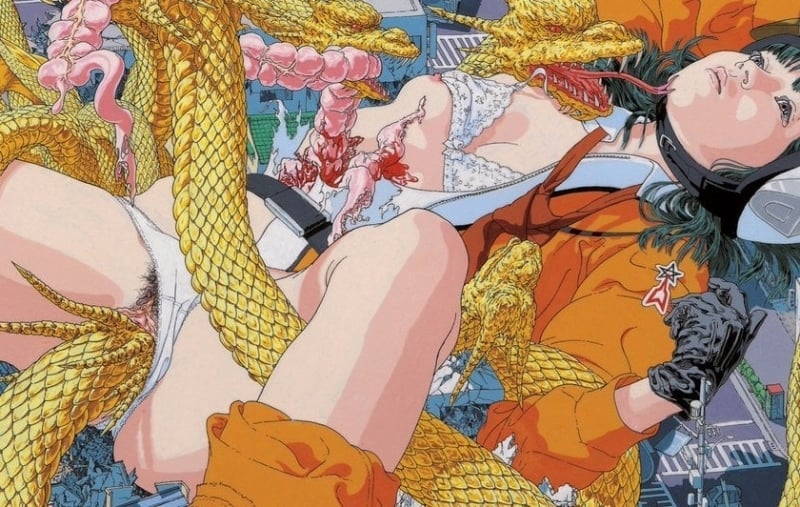
Fig.2a Detail
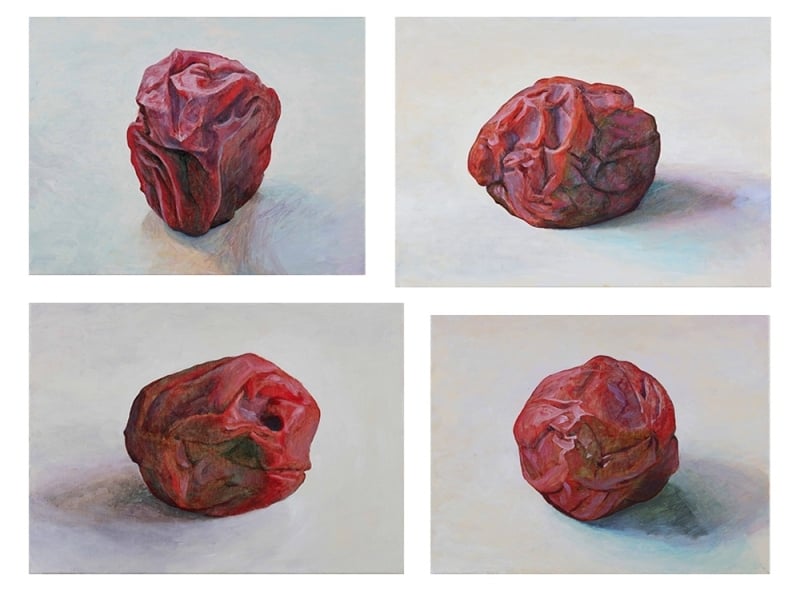
Fig.3. Umeboshi
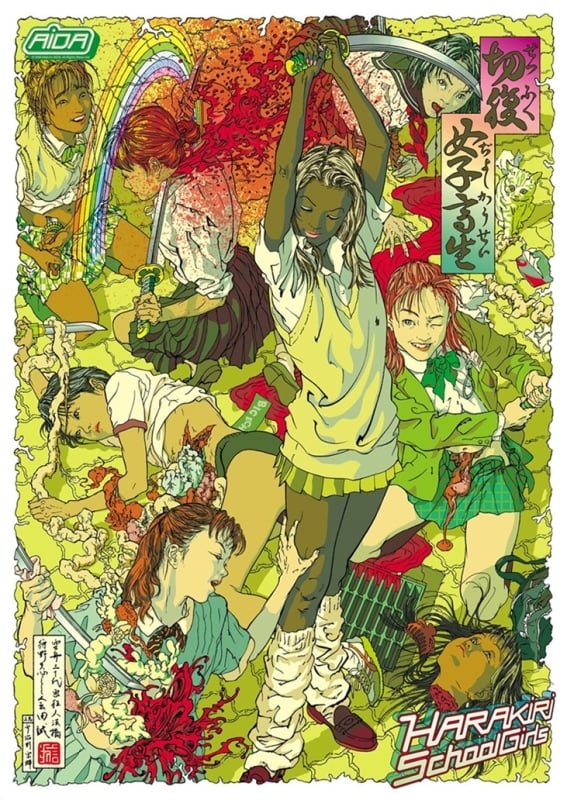
Fig.4. Harakiri Schoolgirls
The Giant Member Fuji Vs King Gidora
Although he devoted himself to visual arts, his first passion was literature, with Yukio Mishima being one of his main influences. As he didn’t have the talent for writing, according to the artist himself in an interview, he turned to art due to his natural ability to draw. Perhaps for this reason, in his work, it’s possible to see that he seeks to construct narratives through images, often supported by satire or parody, as in the painting “The Giant Member Fuji Vs King Gidora” (1993 - Fig.2), where he depicts a character from the Science Police, from the Ultraman series, being sexually attacked by a monster. In an interview, Makoto Aida noted that with this work, he wanted to merge Ukiyo-e with contemporary Japanese pop culture, expressed through manga and anime: “Since my student days, it has been a pending question for me to establish a style of painting that could bridge the two genres in an apparent way.” In addition to being a conjunction of Ukiyo-e with otaku culture and influences from Western painting mixed with traditional Japanese styles from the late 19th century, “The Giant Member Fuji Vs King Gidora” seems to be a deliberately ambiguous work, as it can be read both as a critique of kawaii (cute) culture and as a possible expression of the sexual fantasies of numerous Ultraman fans.
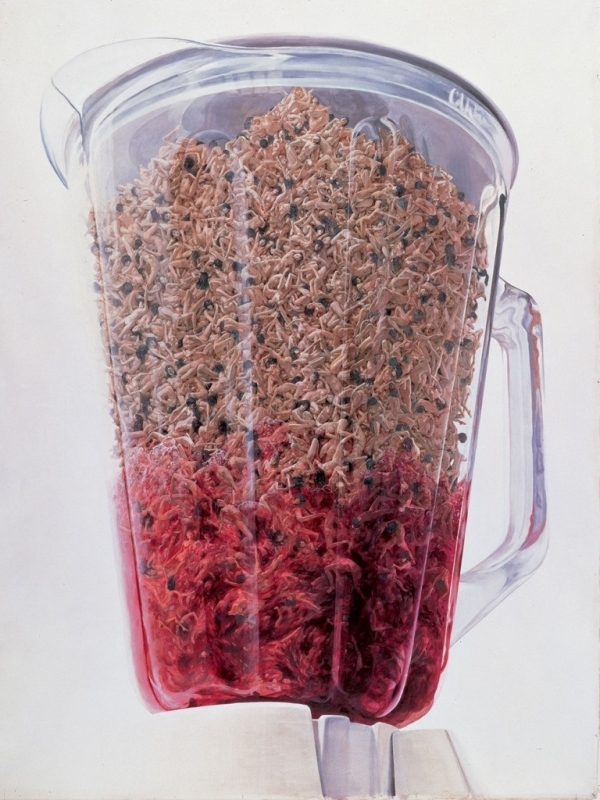
Fig.5. Blender
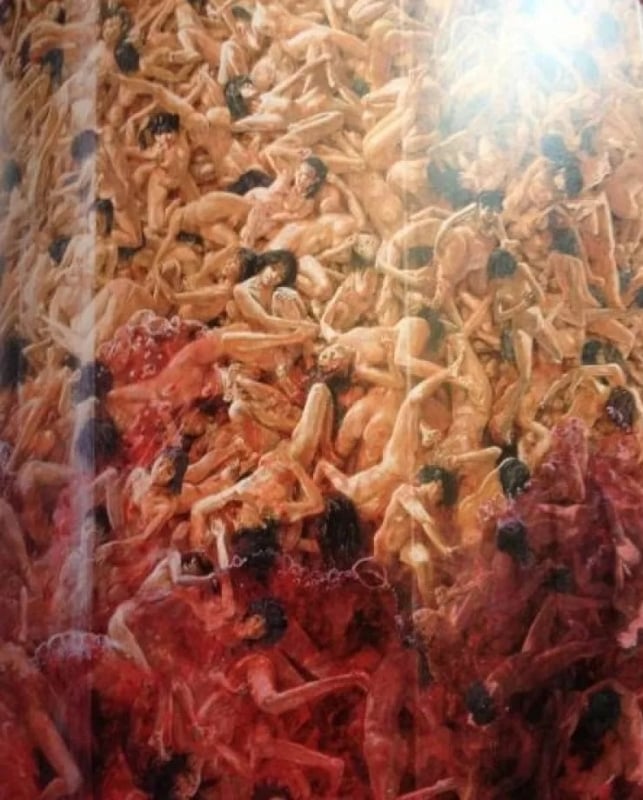
Fig.5a
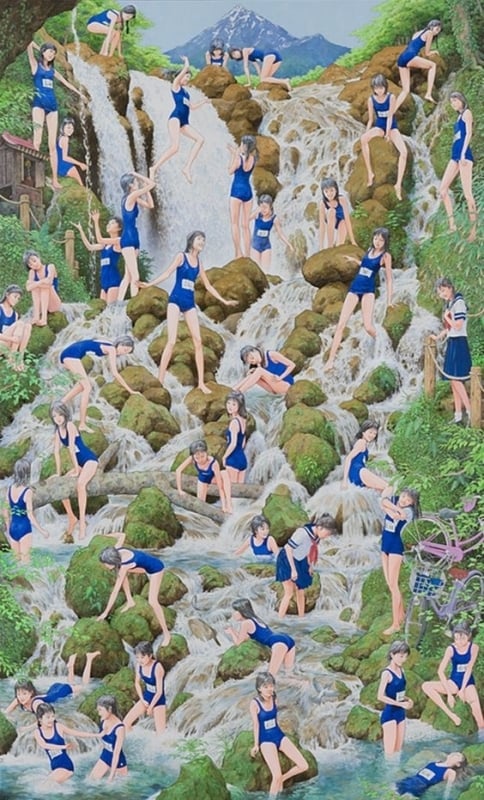
Fig.6. Picture of waterfall
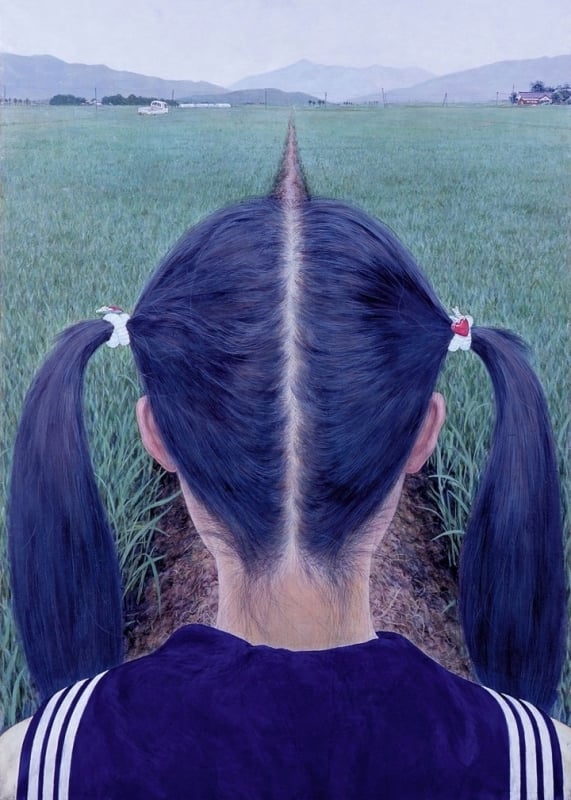
Fig.7. Azemichi (a path between rice fields), 1991
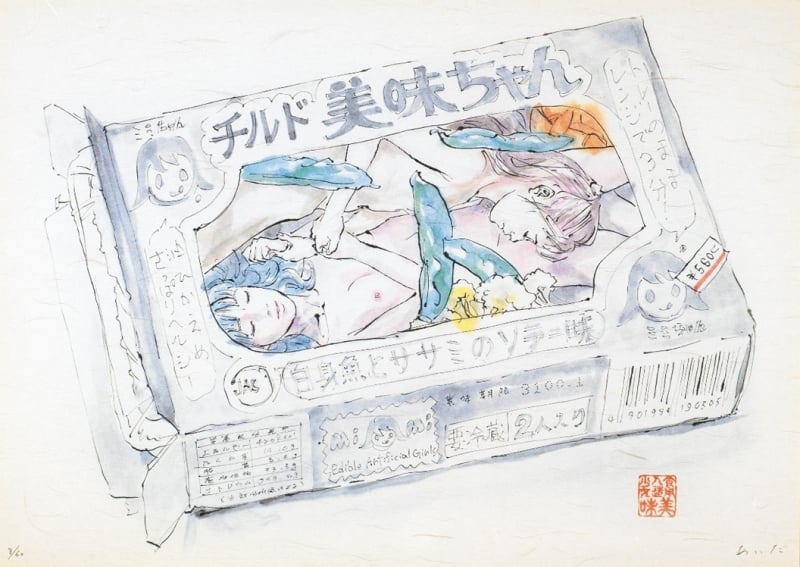
Fig.8. Edible Artificial Girls, Mi-Mi Chan Series
Edible Artificial Girls: Mi-Mi Chan
This kawaii theme returns in another series by Makoto Aida, “Edible Artificial Girls: Mi-Mi chan” (Shokuyō jinzō shōjo: Mi-Mi chan, 2001 - Fig.8 and 9), in which he creates various drawings of miniaturized girls turned into typical Japanese cuisine dishes. In addition to drawings, Makoto produced practical models and installations for the series, accompanied by a commercial note written by him, reminiscent of Jonathan Swift’s style in his famous text “A Modest Proposal”: “Mi-Mi, who can be your good companion or kept in food storage, has taken a firm hold within our lifestyle in the role of a pet. With the great development of new flavors, we can now count on more than five thousand varieties of Mi-Mi. Mi-Mi provides most of the food on Earth... the bad habit of eating the meat of farm animals died out... We are pleased to offer a good time from the hand skilled bio-confectioners handed down since our foundation (Aida Makoto. 2007 Monument for Nothing. Tokyo: Graphicsha, p. 94).

Fig.9. Edible Artificial Girls, Mi-Mi Chan Series
Become a Premium member now and learn more on the dark humor in Aida's “Edible Artificial Girls: Mi-Mi chan,”, his fascination with the avant-garde manga magazine Garo, his controversial manga Mutant Hanako, the grotesque "dehumanizing" aesthetics in his "Dog ", "Blender", and "Ash Color Mountain" paintings, the ambiguities of Japanese pop culture, and many additional images depicting Aida's subversive sensuality.
Click HERE for the exaggerated eroticism of Superflat creator Takashi Murakami
Let us know your thoughts on Aida's grotesque eroticism in the comment box below!

